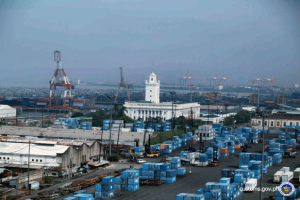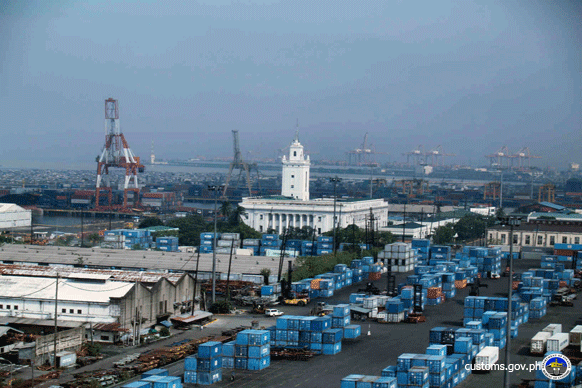
Cabinet Secretary Jose Rene Almendras has submitted an exit memo from the Cabinet Cluster on Port Decongestion, which he headed, to President Benigno Aquino III. The memo also contained recommendations against the occurrence of another port congestion, all of which were approved by the President.
Speaking before at the Port Congestion Updates forum held by the Port Users Confederation last week, Almendras said one of his recommendations is the “need to keep order in the flow of goods.” This means not just trucks following the single trade lane policy still in force, but other “enhancements we have done” such as “processing within the ports and outside.”
He emphasized the importance of sustaining the discipline attained, especially as cargo volume expands. “We hope cargoes will increase because that means better business for all of you and better economy.”
A second suggestion is for stakeholders to “always watch out for the hiccup in the system.” Almendras noted that just recently, two trucks decided to park on one of the roads leading to the ports; soon after others followed, so alarming Department of Public Works and Highways Secretary Rogelio Singson that he texted Almendras, “They’re back!”
Almendras asked for truckers not to do this again, as it’s a “perfect setup for mayor and vice mayor (of Manila) to get back at me (with a truck ban)” and cause another set of problems.
Another recommendation is for port operators to pursue the truck dispatch system, targeted for implementation in the fourth quarter of this year.
Almendras said the system will make life easy for port stakeholders by increasing transparency in knowing when to go to the ports, removing queuing of trucks, and helping them find someone to talk to before entering the terminals.
Lastly, Almendras suggested getting a “third party, not government, not terminal operators, not stakeholders, but a third party to do an honest-to-goodness review and valuation study” for the industry.
The third party could be from the Asian Institute of Management or the UP School of Economics or Engineering, Almendras told reporters on the sidelines of the forum.
“Because it’s no longer just about volume, it’s about traffic, it’s about flows, it’s about good flows, it’s about concentration of industries so you need to do that study,” Almendras said.
The study has to include location, concentration, and population densities “that will tell you how we should go.”
He noted that ports smaller than the country’s, such as the one in Hong Kong, are able to handle more cargo. This tells us, Almedras said, that there is still “room to improve efficiency.”
Currently, the private sector spearheaded by the Philippine International Seafreight Forwarders Association (PISFA) and the United Portusers Confederation is drafting the Philippine Multimodal Transport and Logistics Roadmap. The National Competitiveness Council, under the Department of Trade and Industry, has asked PISFA to craft such a roadmap to be presented to the Asia-Pacific Economic Cooperation (APEC) Services meeting in June 2015. Transport, classified under the Services sector, is required to present its own roadmap to the APEC.
PISFA has tapped IDEA, a think tank from UP founded by, among others, former Socio-Economic Planning Secretary Dr. Cayetano Paderanga, Jr, to collate inputs from stakeholders and craft the roadmap.
Recurrence of port congestion
Meantime, Almendras said port congestion may happen again but not because of truck bans, but as an offshoot of a growing Philippine economy.
He said port congestion “is a problem that can happen again not caused by truck ban but simply by continuously growing economy, which we all wanted.”
The Cabinet official cited the situation last December when construction companies imported in advance higher volumes of materials due to the construction boom. This, coupled with export processing zones booking three months of imports ahead, caused a 73% increase in average volumes for that period.
Almendras said that “we cannot have this (port congestion) occur again and it cannot be the limiting resource to the growth of the Philippine economy because at some point in time, I was so sure port congestion was adversely affecting the Philippine economy.”
The port congestion was triggered last year when Manila imposed a truck ban on February 24. The ban was indefinitely lifted on September 13 last year but by then its impact on trade had been massive.
On March 2, Almendras announced that Manila port operations were normal again and congestion had eased. – Roumina Pablo





